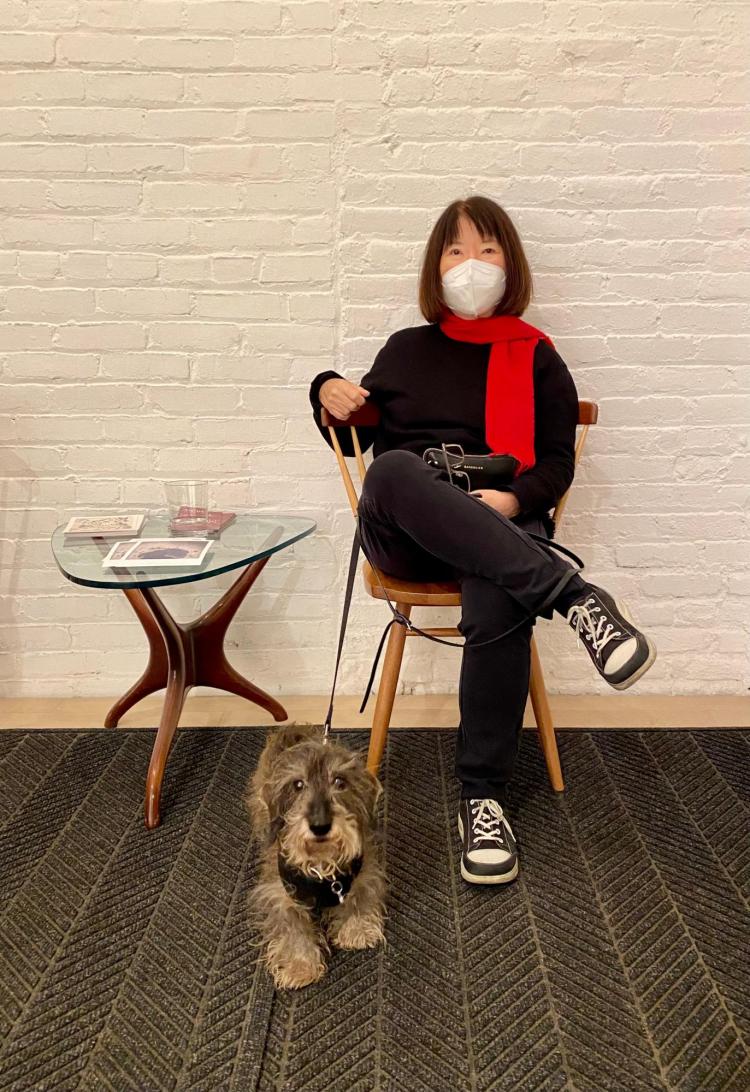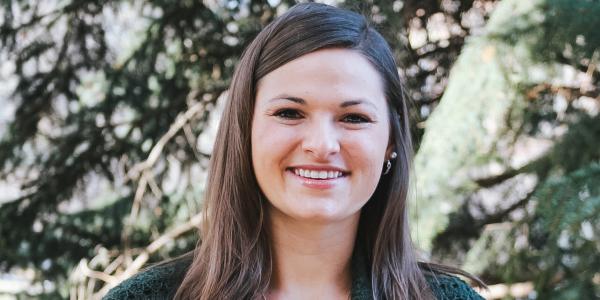Guggenheim-winning alum reflects on her career and time at CU Boulder
Now a successful working artist living in New York City with exhibitions at museums and galleries across the country, Barbara Takenaga was not always sure of her path while attending the University of Colorado Boulder.

At the top of the page: Green Center Above: Barbara Takenaga
After receiving an undergraduate degree in English and fine art in 1972, Takenaga couldn’t bring herself to leave the Hill, where she rented a home with a group of close friends. Instead, she further explored an interest in art by taking one art course per semester.
It took some nudging from a friend, but eventually Takenaga applied and was accepted to the Master of Fine Arts program at CU Boulder. Despite the initial self-doubt about her work as an artist, Takenaga thrived in the program and focused on printmaking.
Printmaking, a medium focused on precise processes and steps, appealed to Takenaga’s
There’s such a wide range in the possibility of abstraction."
desire for control and order while still allowing for creativity and experimentation after the print was pulled. At the end of the three-year program, Takenaga was creating large wall pieces that incorporated repetition and abstraction.
The focus on process and abstraction harnessed at CU Boulder became an essential component of Takenaga’s artistic career. Today, Takenaga, a current Guggenheim memorial fellow and professor emerita of Williams College, is celebrated for her large-scale paintings and the way in which they teeter between abstraction and something slightly representational.
Her most recent works contain forms or imagery that feel somewhat biomorphic (reminiscent of nature or living organisms), cosmic or even landscape related, which can feel vaguely familiar to viewers. Takenaga says she hopes her viewers experience that sense of simultaneous recognition and confusion when looking at her paintings.
“I love to have that response where it’s familiar, but not. It’s almost something but it’s not. … It could be stars, or it could be bullet holes,” Takenaga explains. “There’s such a wide range in the possibility of abstraction.”
Takenaga achieves this dichotomy through a two-part process that begins with paint-pouring and ends with the time-consuming task of adding onto the canvas, carefully creating forms and patterns by hand. The first component injects elements of chance into the work, which Takenaga hoped would help loosen up her control issues around creating artwork. The second component allows Takenaga to regain control and create structure.

White pearlescent
The duality between these two steps resembles the duality between what viewers often experience when looking at her work—the familiar and the unknown. Takenaga says it is not uncommon for her to come across an old photograph or landscape and suddenly realize that as the source for one of her paintings.
“I think this means that there are things in my head, as well as yours, that are part of our visual language, and sometimes we’re not even aware of it.”
Though much of Takenaga’s work has been informed by her days at CU Boulder, it continues to evolve in ways that surprise even her. Most recently, she has begun to incorporate Japanese and Asian formats more overtly.
As a student, Takenaga was not as interested in “identity politics” as some of her peers were. Today, she finds herself rethinking issues of diversity in America. This has pushed her to create compositions that lend themselves to the Japanese prints she always admired.
No matter where her artwork takes her, Takenaga has a soft spot for CU Boulder and the 17 years she spent living here. While in the MFA program, she immersed herself in a community of supportive artists that she believes made a huge difference in both her personal life and career.
A memory that stands out from her time as an MFA student was when the renowned conceptual artist John Baldessari came to CU Boulder as a visiting artist. Takenaga had snagged the coveted role of picking up the artist from the airport and taking him to campus.
It had not occurred to her until she got to the airport that Baldessari’s famously tall, six-foot-seven frame would have some trouble fitting into her compact VW Rabbit. Uncomfortable as the ride may have been for Baldessarri, Takenaga valued the time she got to spend with the artist, whom she still considers a hero.
Asked if she has any advice for today’s art students, Takenaga admits that the art world is unpredictable. Acknowledging that luck and timing can play a big role in success, she believes that working hard is one of the few things that artists can control.
Takenaga also encourages art students to rely on their friends. The friendships Takenaga created in the MFA program helped shape who she is as an artist and person, and she says she will always carry these connections with her.



